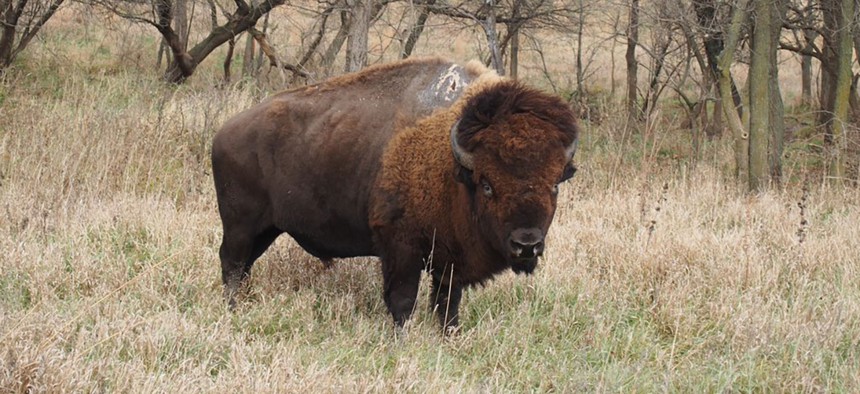The American Bison is Officially Declared a National Icon
Congress approved a bill to make the American bison the national mammal just a century after the animal almost went extinct.
The American bison will soon join the bald eagle, the rose and the oak tree on the list of national “things” when the bearded, one-ton beast is officially named the national mammal.
On April 27, the US Congress approved the National Bison Legacy Act, which is expected to be signed into law by president Barack Obama. It will recognize the American bison as the national mammal of the United States.
In a way, the designation marks an impressive comeback for an animal that we nearly wiped off the face of the planet. When settlers first swarmed west in the 1800s, they encountered tens of millions of bison, which roamed in thick herds across most of the North American continent from Mexico to Canada. Bison were a vital food source for Native Americans, and were deeply embedded in the culture of many tribes, who, as many American school children know, made ample use of nearly every bone and sinew.
But the animal was ruthlessly and often wastefully slaughtered by hunters, settlers, and even gun-slinging tourists who gleefully shot them for sport from moving locomotives. The US Army also made it official policy to kill hundreds of thousands of bison in an effort to deprive Native Americans of food and thus starve them off lands that the government wanted for American settlement.
In 1905, president Theodore Roosevelt, an avid hunter who killed numerous bison himself, saw the animal’s destruction as a tragedy and started the American Bison Society to preserve the few thousand animals that were left. Perhaps, one could argue, that was a good time to establish the bison as the national mammal, but it has taken another 110 years or so to become a reality.
The designation does nothing to further protect the bison, but supporters say it will help people “rediscover” the bison as a key feature of the American landscape.
“This is an important move to recognize the symbolic, cultural and economic importance of the species to us today and to bring that back to public attention,” said Keith Aune, director of the Bison Conservation Program for the Wildlife Conservation Society.
Today, there are an estimated 500,000 bison in the American west, the vast majority of them part of private commercial operations which produce meat products like buffalo burgers and jerky. The designation is the result of efforts by groups like the Vote Bison Coalition and the Wildlife Conservation Society, who have been at the forefront of bringing the animal back.
Given that this number is a tiny fraction of the animals that once lived on the continent, it may seem odd to consider the bison’s recovery a major success. But perhaps officially elevating the animal to a national icon will help further increase its numbers.
NEXT STORY: Play of the Day: More on the Cruz/Fiorina Ticket



